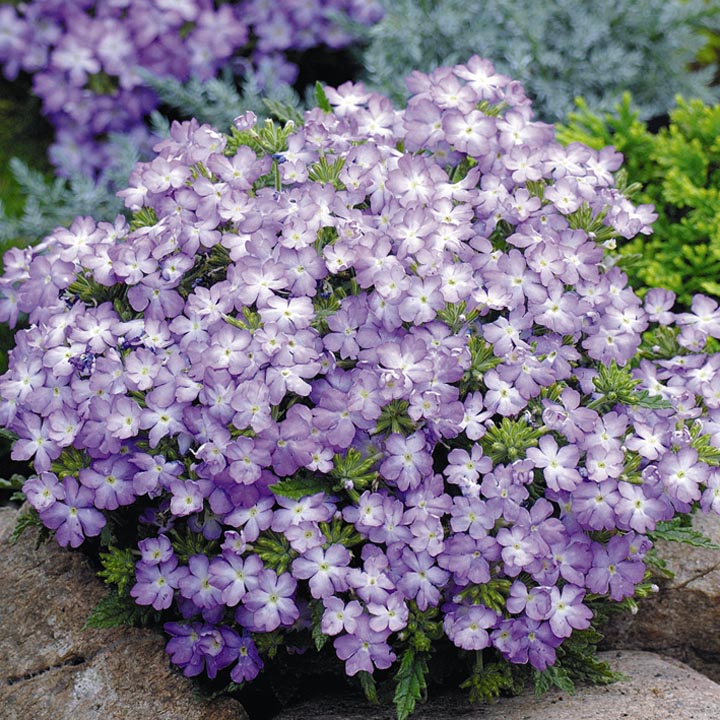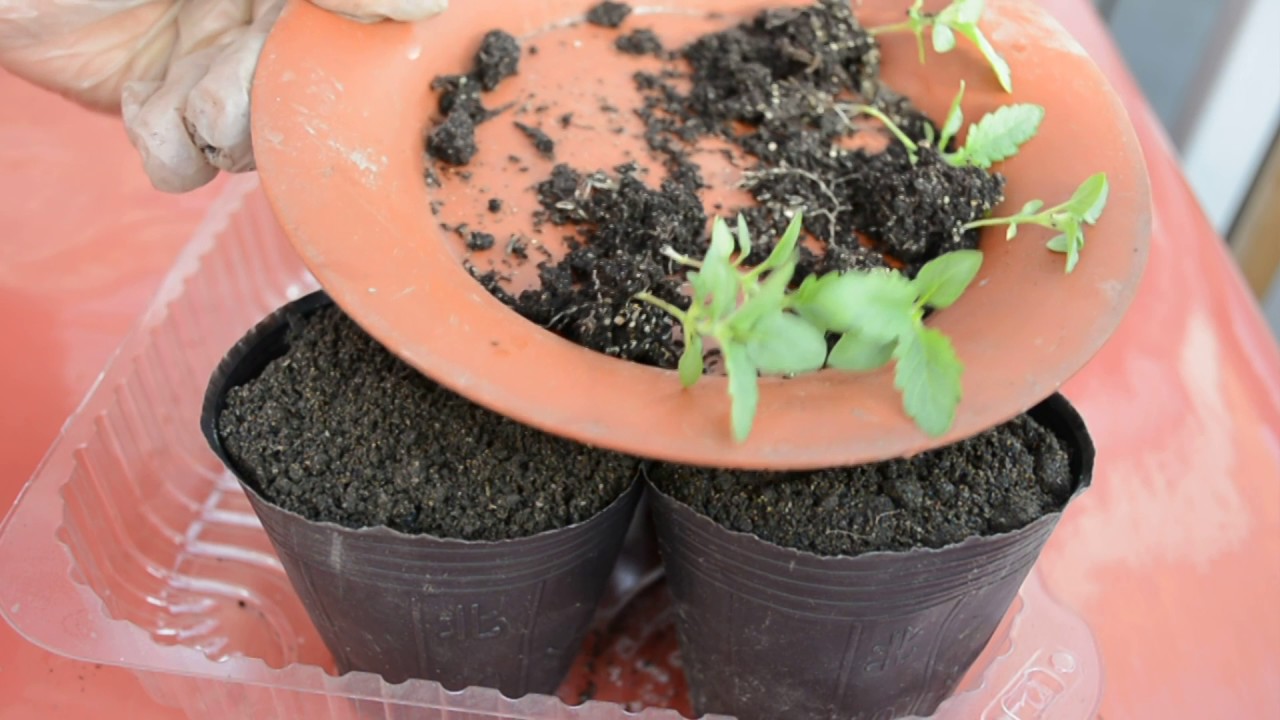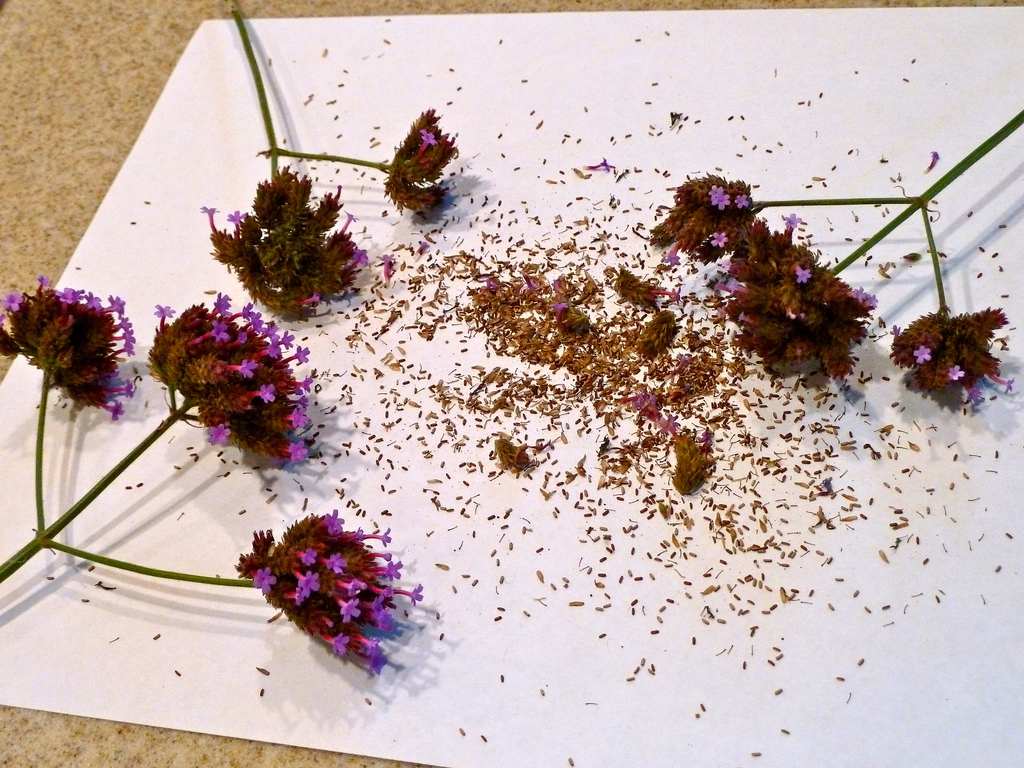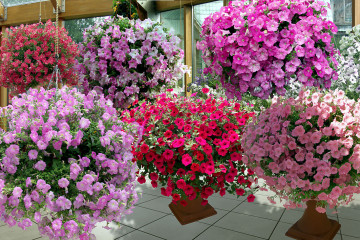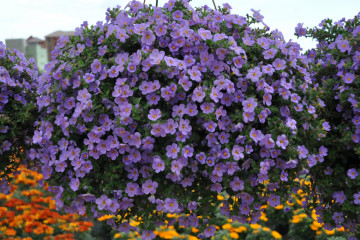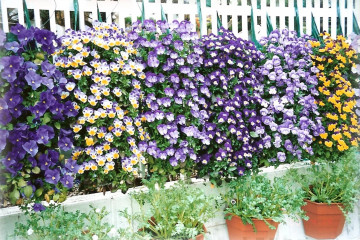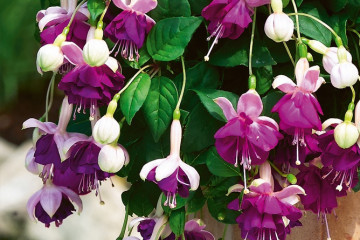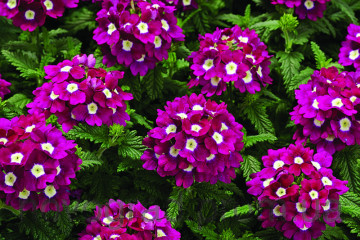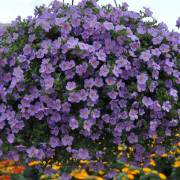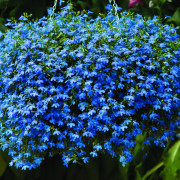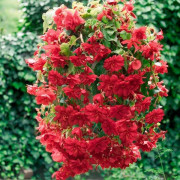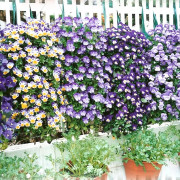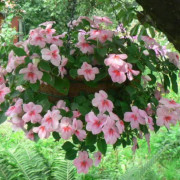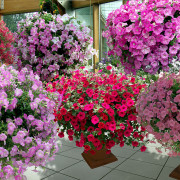Ampel verbena - growing in a pot, planting and care
Content:
Due to its beauty and unpretentiousness, ampel verbena is often used in landscaping balconies, windows and terraces. Anyone can handle the cultivation of this plant. For abundant and long flowering, you need to know the basic rules for caring for it.
Care for ampelous verbena
Verbena is undemanding in keeping conditions and is considered an unpretentious plant. To grow it, you need:
- Sunny place. Withstands light partial shade.
- Neutral or slightly alkaline soil with good aeration (with the addition of coarse sand or vermiculite)
- Moderate watering (so that water does not accumulate).
- At the beginning of the season, top dressing with nitrogen fertilizers is relevant, during the budding period - phosphorus-potassium fertilizers (ready-made fertilizers for flowering plants are sold in stores).
- After planting, the space around the plant is mulched. For this purpose, they use rotted last year's sawdust or cut grass. The grass is inspected for seeds so as not to bring the weeds into the flower garden.
How to care for verbena after flowering
Verbena ampelous, the cultivation of which is possible as an annual, is uprooted after flowering.
If there is a desire to leave the plant at home for the winter, then it is transplanted into a pots. Shoots are pruned to 2/3 of their length. The room should be bright and cool - up to 15 ° C. Top dressing is reduced to twice a month. Fertilizers should contain more potassium and phosphorus than nitrogen. Watering is reduced. These conditions will remain until the end of February.
Planting ampelous verbena
This plant is used both in flower beds and in containers or pots. In this case, the planting density and the factors of the content of the ampelous verbena are taken into account.
Planting in pots
Verbena ampelous is planted in pots after all spring frosts - in late May and early June. Each plant should have 1.5 - 2 liters of soil. That is, 2-3 vervains are planted in a 5-liter planter, 4 seedlings are planted in a 7-liter planter, 6-8 plants are planted in a 10-liter one. It is advisable to place flowers at a distance of 25 - 30 cm from each other.
A drainage layer 2 - 3 cm thick is laid out at the bottom of the pots. It is better to plant seedlings with a clod of earth so as not to disturb the roots and for their quickest adaptation.
Features of planting plants in open ground
It is preferable to plant ampel verbena in a group. Once it grows up and fills in the gaps between the plants, there will be no room for weeds. The interval between plantings is 30-35 cm. Approximately 40 specimens per 1 m2. For a higher density, 50 plants per 1 m2 are used.
Homemade verbena are planted in a flower garden in the same way as in a flower pot. That is, when all the frosts have passed. And it is better to transplant by transshipment - for less trauma to the roots. Before planting, the dug hole is thoroughly spilled with water. This plant does not bloom well in cold rainy weather. Therefore, they prefer to grow vervain in pots, decorating balconies and terraces.
Reproduction
Carried out by cuttings or sowing seeds. Each method has its own advantages.
Cuttings of ampelous verbena
Most often, varietal plants are propagated in this way so that the children fully inherit the maternal characteristics. There are vegetative varieties of vervain. They reproduce only by root division or cuttings. Flowers obtained from seeds do not always retain their pure varietal characteristics. And also, plants from cuttings bloom faster.
To propagate by cuttings, an adult, healthy plant is chosen. The procedure is carried out in late winter - early spring. At this time, daylight hours are already significantly lengthening.
Stages:
- Preparing the land for planting. Use light, nutritious soils. For better aeration, you can add vermiculite, river sand, or coconut flakes.
- A green, apical shoot, about 6 cm long, with 4-6 leaves, is cut with a sharp razor. If there is an inflorescence on the handle, then it is removed. Otherwise, it will take away the strength for flowering.
- The lower leaves are also recommended to be removed.
- There should be a gap of 1-2 cm between the cut and the lower internode.
- The petiole is dipped in water and then in heteroauxin for better root formation.
- Having made a small hole with a match, a stalk is placed there. It should be buried at the lower internode.
- Cover the top of the pot with polyethylene, glass or a cut off top from a plastic bottle. The container should be ventilated daily for 30 minutes a day. And the soil must be moist.
- Plants are kept in partial shade. New leaves should appear in 2-3 weeks. So the verbena has taken root.
Seed collection
To get your own seeds from verbena, you need to wait until the bolls on the plants mature and darken. After that, the fruits are harvested and placed on a cloth or newspaper to dry the seeds. Sometimes they are evenly mixed. The dried bolls are opened and seeds are poured out of them, which are stored in cloth or paper bags until sowing.
Sowing verbena seeds and growing
Sowing seeds is recommended at the end of February - March. Seeds are distributed on the prepared soil, leaving gaps between them 3-4 cm. Sprinkle with a small amount of soil on top. The container is covered with glass or foil. Seedlings appear in 2-3 weeks at a temperature of 20 - 25 ° C. When the seeds hatch, it is necessary to lower the temperature to 16 - 18 ° C. Seedlings are planted 3 weeks after their appearance.
To prevent the plant from rotting, the container is ventilated daily. The soil should be moist without stagnant water. It is recommended to apply a complex fertilizer weekly. Hybrid varieties of ampelous verbena do not require pinching, since they have well-developed branching.
Before planting on the street or balcony, the plants are hardened. For this, the duration of "walks" in the open air is gradually increased. In strong sun, it is advisable to cover with two-layer gauze or newspaper so that the plant does not burn.
Diseases and pests
If the plant is healthy, then it has good immunity. And even if insect pests appear or attack diseases, the flower resists them and feels quite well. However, the wrong content reduces the strength of the plant. Verbena is prone to common common diseases:
- rot of the root collar of seedlings, popularly nicknamed "black leg";
- gray rot (mold);
- powdery mildew (white powdery spores spread on flowers and leaves).
There is a bacterial wilting of the shoots. It manifests itself as chlorosis and necrosis. At a later stage, the plant dies. On the cut, pulling strands are visible - exudate.
In this case, a bactericide will help. In stores, there is a systemic fungicide and a broad-spectrum bactericide.
Among insects, the most common pests are: spider mites, aphids, thrips.
- Spider mite, with a large population, forms a cobweb on the leaves. It is especially noticeable on young shoots. On the reverse side of the leaf, specks are visible - the molal skins of mites.
- Aphids, with a strong accumulation, lubricate the shoots with their sticky milk. As a result, the plant does not develop well and may die.
- Thrips eat plants, settling on leaves and flowers. They are noticed by the streaky leaf spot.
On the street, their number does not increase in large numbers due to rain, birds, wind. In homes, these insects thrive. The plant from them can be processed with phytoverm. It is a biological product that does not pose a significant threat to humans and animals. At least two treatments should be carried out with an interval of 10 days.
Thus, observing simple steps when planting and leaving the ampelous verbena, you can enjoy its flowering from the beginning of summer until frost.
